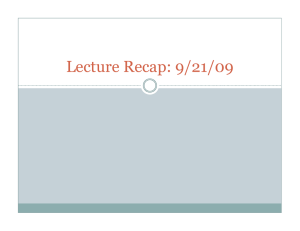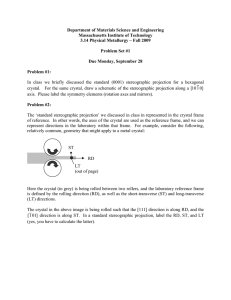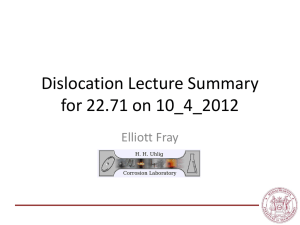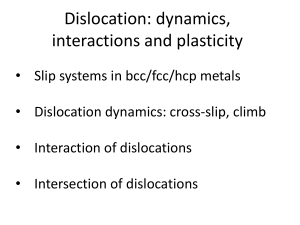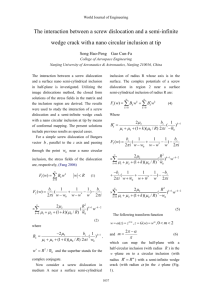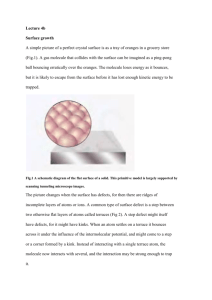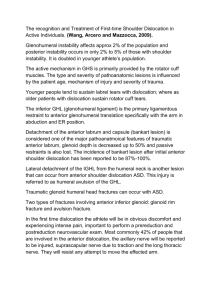Dislocation_Recap
advertisement
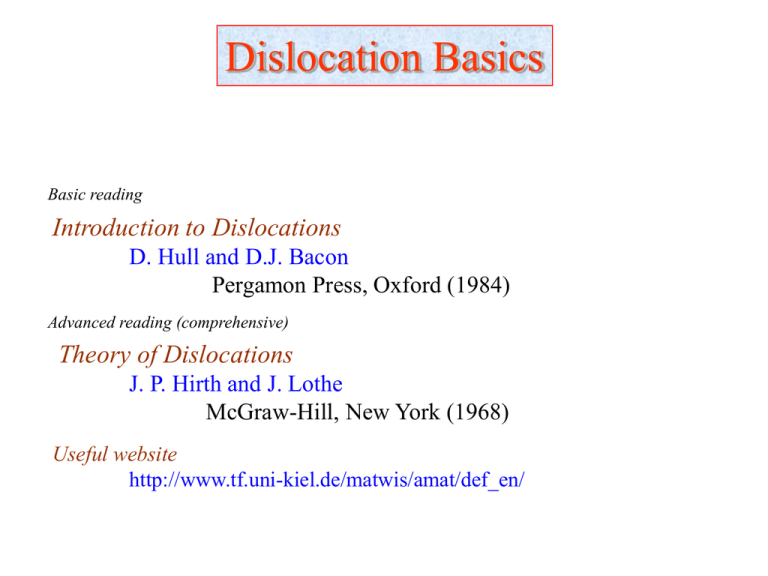
Dislocation Basics Basic reading Introduction to Dislocations D. Hull and D.J. Bacon Pergamon Press, Oxford (1984) Advanced reading (comprehensive) Theory of Dislocations J. P. Hirth and J. Lothe McGraw-Hill, New York (1968) Useful website http://www.tf.uni-kiel.de/matwis/amat/def_en/ Deformations of a hollow cylinder showing the formation of various defects (Volterra constructions) Edge dislocations Perfect cylinder Screw dislocation Disclinations Dislocation can be considered as a boundary between the slipped and the unslipped parts of the crystal lying over a slip plane* Slipped part of the crystal Unslipped part of the crystal * this is just a way of visualization and often the slipped and unslipped regions may not be distinguished Burgers Vector Edge dislocation Determination of Burgers vector in a dislocated crystal using Right Hand Finish to Start Rule (RHFS) In a perfect crystal make a circuit (e.g. as in the figure shown: 8 atomic steps to right, 7 down, 8 left & 7 up). The circuit is Right Handed. Do the same in the same in the dislocated crystal. The ‘missing link’ (using some convention like RHFS) is the Burgers vector. RHFS: Right Hand Finish to Start convention Note: the circuit is drawn away from the dislocation line Screw dislocation Note: The figure shows a Right Handed Screw (RHS) dislocation E S Pure screw Pure Edge Except for points S and E the remaining portion of the dislocation line has a mixed character Edge and Screw components: the ‘usual’ way to get the effective Burgers vector The b vector is resolved into components parallel to t and perpendicular to t Screw component Edge component Edge component b Sin( ) Components of the mixed dislocation at P Screw Component b Cos( ) Edge Dislocation Glide Motion of an edge dislocation leading to the formation of a step (of ‘b’) Shear stress Surface step (atomic dimensions) Motion of a screw dislocation leading to a step of b Motion of Screw dislocation Step-2 Further break up of the motion of the dislocation ► In BCC metals and Ge thermally assisted formation of kink pairs can cause slip at stresses < PN Continued… Climb of Edge Dislocation Positive climb Removal of a row of atoms Negative climb Addition of a row of atoms Removal of a row of atoms leads to a decrease in vacancy concentration in the crystal and negative climb leads to an increase in vacancy concentration in the crystal.
